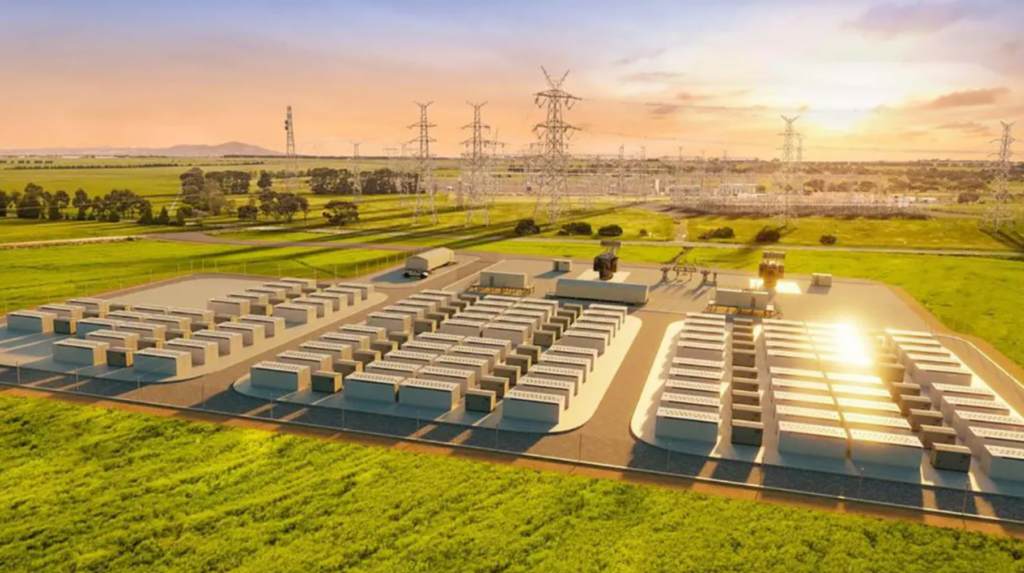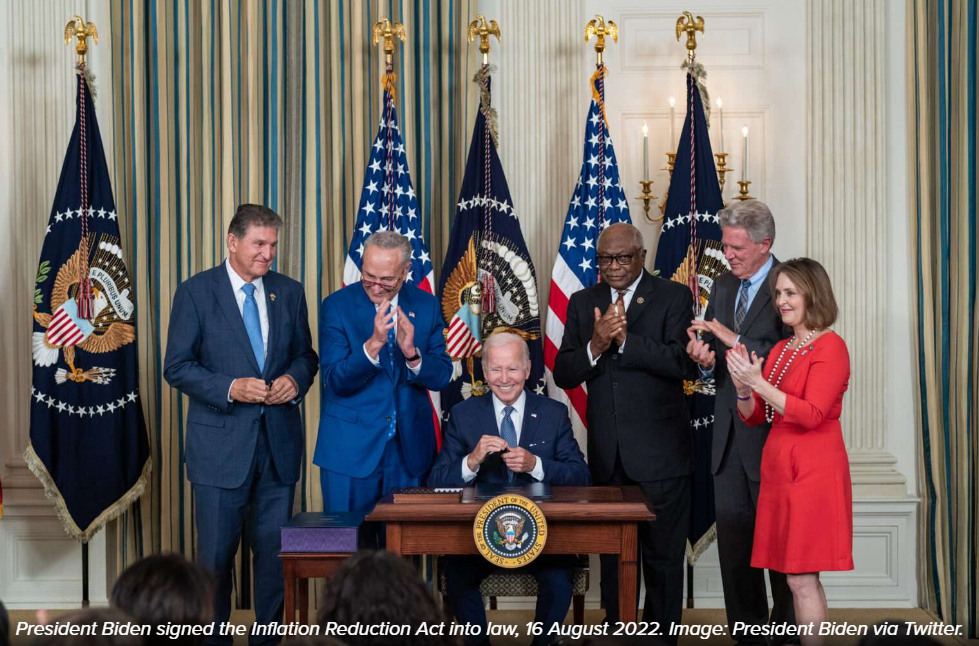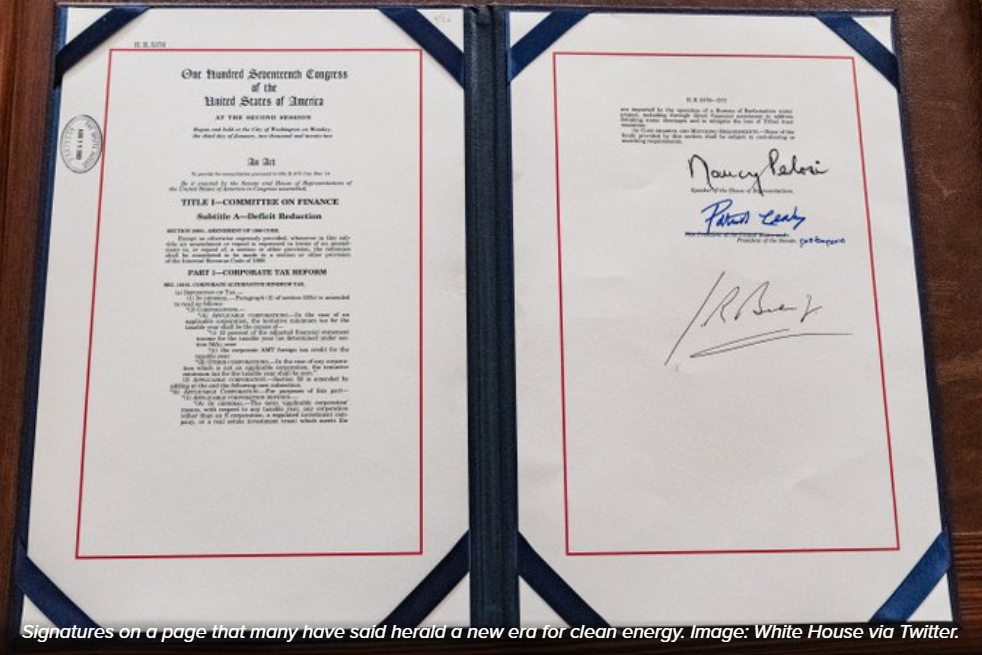By Guest Contributor
View the original article here
In just one year — from 2020 to 2021 — utility-scale battery storage capacity in the United States tripled, jumping from 1.4 to 4.6 gigawatts (GW), according to the US Energy Information Administration (EIA). Small-scale battery storage has experienced major growth, too. From 2018 to 2019, US capacity increased from 234 to 402 megawatts (MW), mostly in California.
While this progress is impressive, it is just the beginning. The clean energy industry is continuing to deploy significant amounts of storage to deliver a low-carbon future.
Having enough energy storage in the right places will support the massive amount of renewables needed to add to the grid in the coming decades. It could look like large-scale storage projects using batteries or compressed air in underground salt caverns, smaller-scale projects in warehouses and commercial buildings, or batteries at home and in electric vehicles.
A 2021 report by the US Department of Energy’s Solar Futures Study estimates that as much as 1,600 GW of storage could be available by 2050 in a decarbonized grid scenario if solar power ramps up to meet 45 percent of electricity demand as predicted. Currently only 4 percent of US electricity comes from solar.
But for storage to provide all the benefits it can and enable the rapid growth of renewable energy, we need to change the rules of an energy game designed for and dominated by fossil fuels.
Energy storage has big obstacles in its way
We will need to dismantle three significant barriers to deliver a carbon-free energy future.
The first challenge is manufacturing batteries. Existing supply chains are vulnerable and must be strengthened. To establish more resilient supply chains, the United States must reduce its reliance on other countries for key materials, such as China, which currently supplies most of the minerals needed to make batteries. Storage supply chains also will be stronger if the battery industry addresses storage production’s “cradle to grave” social and environmental impacts, from extracting minerals to recycling them at the end of their life.
Second, we need to be able to connect batteries to the power system, but current electric grid interconnection rules are causing massive storage project backlogs. Regional grid operators and state and federal regulatory agencies can do a lot to speed up the connection of projects waiting in line. In 2021, 427 GW of storage was sitting idle in interconnections queues across the country.
You read that right: I applauded the tripling of utility-scale battery storage to 4.6 GW in 2021 at the beginning of this column, but it turns out there was nearly 100 times that amount of storage waiting to be connected. Grid operators can — and must — pick up the pace!
Once battery storage is connected, it must be able to provide all the value it can in energy markets. So the third obstacle to storage is energy markets. Energy markets run by grid operators (called regional transmission organizations, or RTOs) were designed for fossil fuel technologies. They need to change considerably to enable more storage and more renewables. We need new market participation rules that redefine and redesign market products, and all stakeholders have to be on board with proposed changes.
Federal support for storage is growing strong
Despite these formidable challenges, the good news is storage will benefit from new funding and several federal initiatives that will develop projects and programs that advance energy storage and its role in a clean energy transition.
First, the Infrastructure Investment and Jobs Act President Biden signed last year will provide more than $6 billion for demonstration projects and supply chain development, and more than $14 billion for grid improvement that includes storage as an option. The law also requires the Department of Energy (DOE) and the EIA to improve storage reporting, analysis and data, which will increase public awareness of the value of storage. And even more support will be on its way now that President Biden has signed the historic Inflation Reduction Act into law.
Second, the DOE is working to advance storage solutions. The Energy Storage Grand Challenge, which the agency established in 2020, will speed up research, development, manufacturing and deployment of storage technologies by focusing on reducing costs for applications with significant growth potential. These include storage to support grids powered by renewables, as well as storage to support remote communities. It sets a goal for the United States to become a global leader in energy storage by 2030 by focusing on scaling domestic storage technology capabilities to meet growing global demand.
Dedicated actions to deliver this long-term vision include the Long Duration Storage Shot, part of the DOE’s Energy Earthshots Initiative. This initiative focuses on systems that deliver more than 10 hours of storage and aims to reduce the lifecycle costs by 90 percent in one decade.
Third, national labs are driving technology development and much-needed technical assistance, including a focus on social equity. The Pacific Northwest National Laboratory in Richland, Washington, runs the Energy Storage for Social Equity Initiative, which aligns in many respects with the Union of Concerned Scientist’s (UCS) equitable energy storage principles. The lab’s goal is to support energy storage projects in disadvantaged communities that have unreliable energy supplies. This initiative is currently supporting 14 urban, rural and tribal communities across the country to close any technical gaps that may exist as well as support applications for funding. It will provide each community with support tailored to their needs, including identifying metrics to define such local priorities as affordability, resilience and environmental impact, and will broaden community understanding of the relationship between a local electricity system and equity.
Fourth, the Federal Energy Regulatory Commission (FERC) is nudging RTOs to adjust their rules to enable storage technologies to interconnect faster as well as participate fairly and maximize their energy and grid support services. These nudges are coming in the form of FERC orders, which are just the beginning. Implementing the changes dictated by those orders is crucial, but often slow.
States support storage development, too
Significant progress to support energy storage is also happening at the state level.
In Michigan, for example, the Public Service Commission is supporting storage technologies and has issued an order for utilities to submit pilot proposals. My colleagues and I at UCS and other clean energy organizations are making sure these pilots are well-designed and benefit ratepayers.
Thanks to the 2021 Climate and Equitable Jobs Act, Illinois supports utility-scale pilot programs that combine solar and storage. The law also includes regulatory support for a transition from coal to solar by requiring the Illinois Power Agency to procure renewable energy credits from locations that previously generated power from coal, with eligible projects including storage. It also requires the Illinois Commerce Commission to hold a series of workshops on storage to explore policies and programs that support energy storage deployment. The commission’s May 2022 report stresses the role of pilots in advancing energy storage and understanding its benefits.
So far, California has more installed battery storage than any other state. Building on this track record, California is moving ahead and diversifying its storage technology portfolio. In 2021, the California Public Utilities Commission ordered 1 GW of long-duration storage to come online by 2026. To support this goal, California’s 2022–2023 fiscal budget includes $380 million for the California Energy Commission to support long-duration storage technologies. In the long run, California plans to add about 15 GW of energy storage by 2032.
To accelerate their transition to clean energy, other states can look at these examples to help shape their own path for energy storage. Illinois’ 2021 law especially provides a realistic blueprint for other Midwestern states to tackle climate change and deliver a carbon-free energy future.
Energy storage is here, so let’s make it work
Storage will enable the growth of renewables and, in turn, lead to a sustainable energy future. And, as I have pointed out, there has been significant progress, and the future looks promising. Federal initiatives are already helping to advance storage technologies, reduce their costs, and get them deployed. Similarly, some states are supporting this momentum.
That said, more work will be needed to remove the barriers I described above, and for that to happen, the to-do list is clear. The battery industry needs to develop responsible, sustainable supply chains, FERC needs to revamp interconnection rules to support faster deployment, and regional grid operators need to reform energy markets so storage adds value to a clean grid. My colleagues and I at UCS are working to ensure all that happens.



